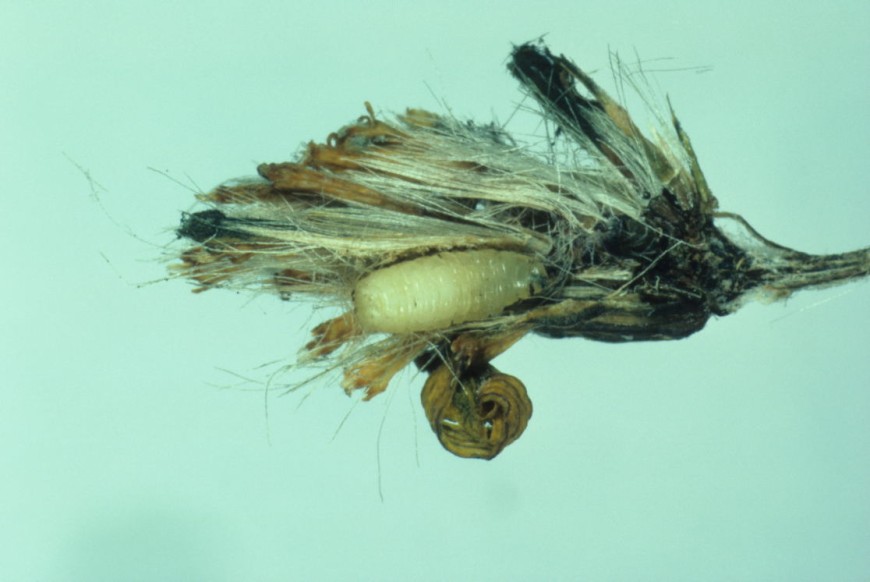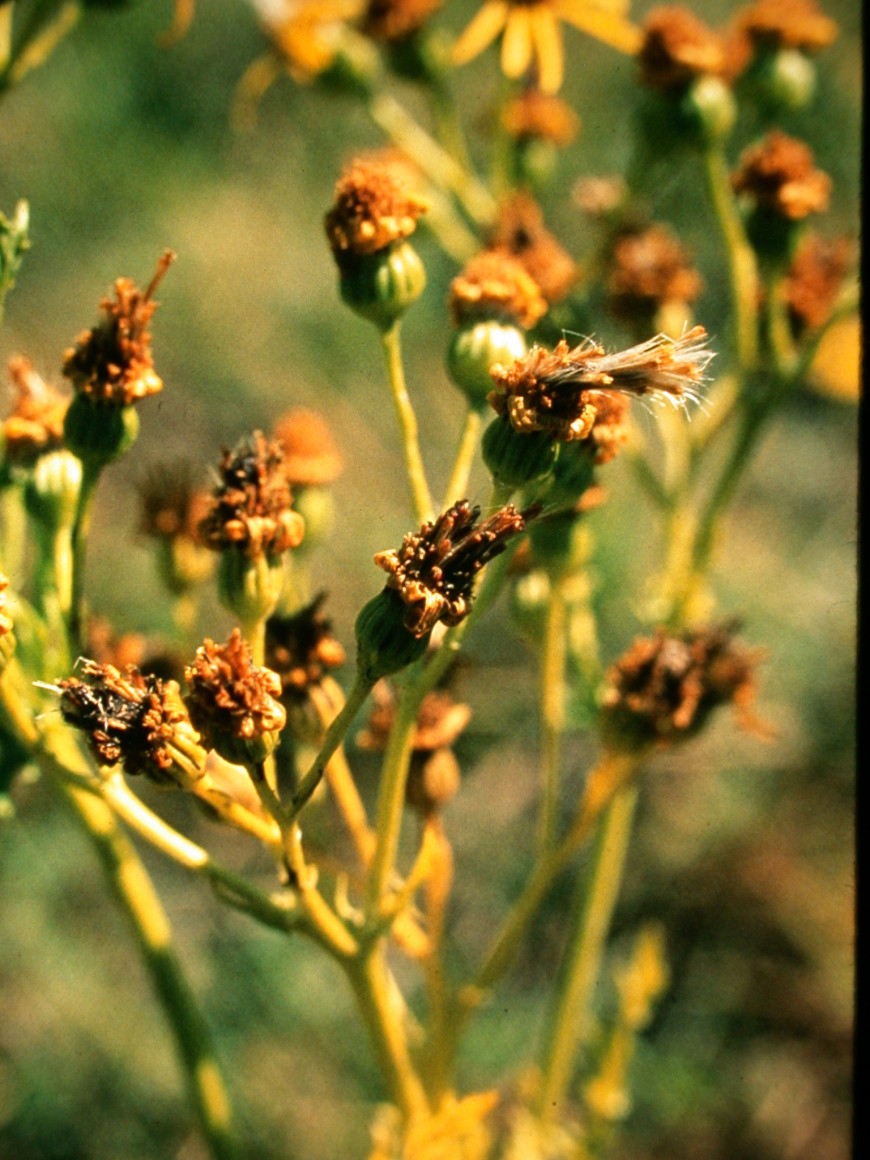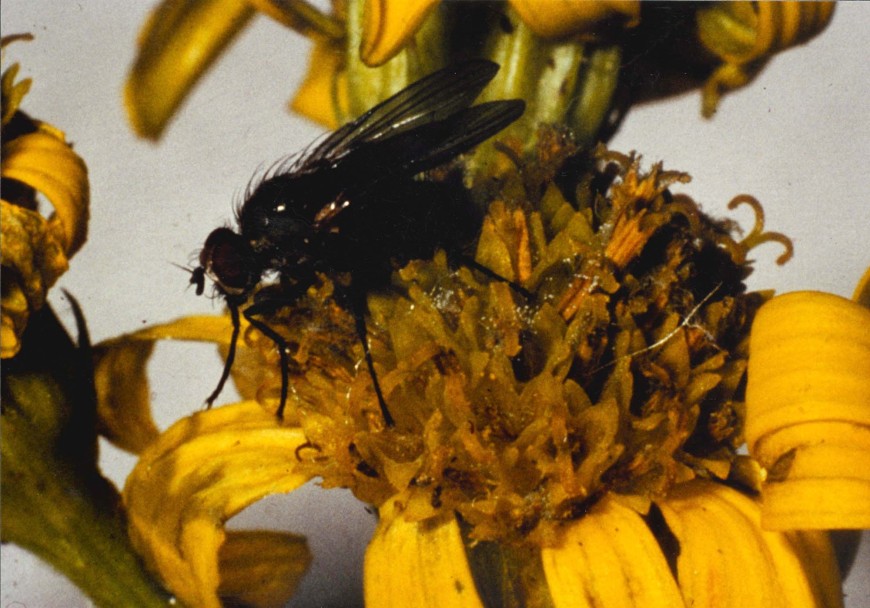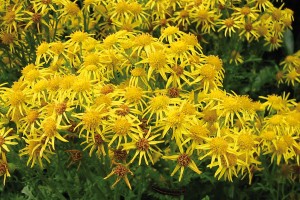Ragwort seed fly
History in New Zealand
Ragwort seed fly was imported from England by the Cawthron Institute in the late 1920s but was not released until the late 1930s at Nelson and a number of North Island sites. The seed fly established on the central volcanic plateau, Bay of Plenty, and southern Waikato. A similar fly (Botanophila seneciella) is thought to have been released at the same time but did not establish
How would I find/recognise it and what is its lifecycle?
You may see the flies around ragwort infestations throughout summer. They usually emerge in late spring and are ready to lay their eggs as soon as ragwort comes into flower. The flies are greyish in colour and about 4-5 mm long, with males tending to be darker and smaller than females.
You will not easily be able to distinguish the seed fly from other fly species, but it is easy to distinguish from other ragwort biocontrol agents. See Cinnabar Moth, Ragwort Crown-Boring Moth, Ragwort Flea Beetle, Ragwort Plume Moth.
White eggs are laid singly among the florets (the many reproductive units, within the petals, of composite flowers) but are not visible externally - they hatch after about 4 days. Over summer, the white maggot-like larvae consume the immature ragwort seeds. Because the larvae feed inside the flowerheads, you cannot see them but you can detect their presence by two signs. One clue is the matting together of florets by a larval secretion. Another clue is the flower pappus (the feathery structures that allow mature seeds to become airborne) being pushed out of the flowerhead by the growing larvae.

Image: ragwort seed fly larva.
In February and March, the mature larvae either crawl or fall to the ground and pupate. Pupae are reddish-brown, barrel-shaped, and 4-5 mm long.
How does it damage ragwort?
Each larva consumes 80% of the seeds in a single flowerhead. Viability of the remaining uneaten seeds is reduced and matting of the pappus may restrict dispersal.

Image: ragwort seed fly damage to ragwort flower heads.
Will it attack other plants?
No, the fly attacks ragwort only.
How effective is it?
A high proportion of the first seed heads are infested by the seed fly, but this declines throughout the summer when the majority of ragwort plants flower. Studies have shown that 80-90% of seeds escape attack.
How can I get the most out of it?
The ragwort seed fly does not have enough impact on seed production to reduce ragwort populations. For this reason, no further effort to foster this agent is warranted.
Key contact



